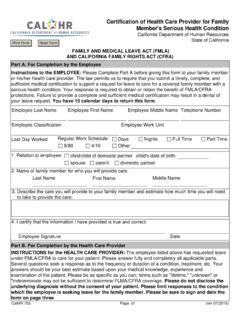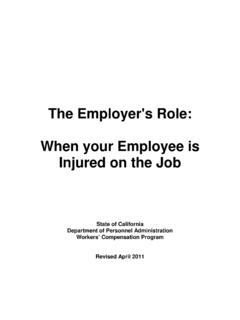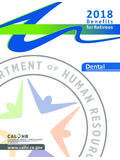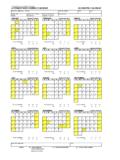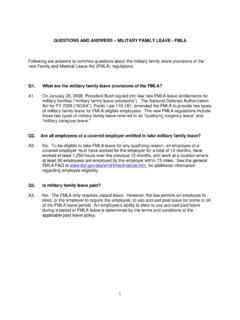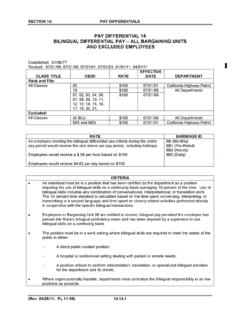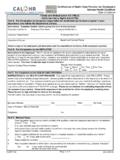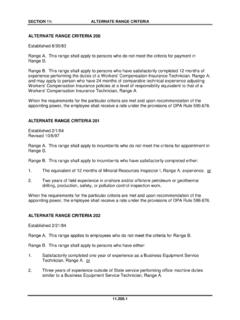Transcription of The Employer's Role: When your Employee is Injured on the Job
1 The Employer's Role: When your Employee is Injured on the Job State of california Department of Personnel Administration Workers Compensation Program Revised April 2011 1 IInnttrroodduuccttiioonn Every State department has (at least) one Return-to-Work Coordinator (RTWC) who manages your workers compensation program. That person is your expert. This booklet provides a summary of the State s Workers' Compensation Program and outlines your responsibilities in the event that one of your employees has an on-the-job injury. It will provide a generic explanation of a complex system.
2 For specific questions, please consult with your RTWC or your department s written policies and procedures. Workers' Compensation Definitions Workers' Compensation The workers' compensation system was established to provide benefits to employees who sustain a work-related injury or illness. Benefits include medical treatment, payments for lost wages, diminished future earning capacity, retraining costs, and death benefits to the Employee s dependent(s). Under workers compensation law, benefits are paid regardless of fault. All State employees are covered by workers' compensation.
3 The cost of this protection is completely paid by your department, the employer. The employees make no contribution. Benefits are tax-free and not subject to Social Security deductions. Work-Related Injury Injury is described in Labor Code 3208 as any injury or disease arising out of employment. Example of an injury: A sprained back while lifting a heavy box at work. Example of an illness: A skin rash as a result of exposure to chemicals or solvents used at the work site. State Compensation Insurance Fund (State Fund) State Fund administers workers compensation claims on behalf of the State of california , the employer.
4 State Fund makes all liability determinations and ensures that your Injured Employee receives all benefits that they are lawfully entitled. State Fund offices are located throughout the state, your RTWC can direct you to the office that adjusts your department s claims. For office locations, forms, and more workers compensation information, please visit their website at: 2 Return-to-Work Coordinator (RTWC) The RTWC is responsible for managing the workers compensation cases for your department, and for assisting Injured employees in returning to work as soon as medically feasible.
5 The RTWC often relies on the Employee s supervisor to provide updated medical slips and to get information on the availability of transitional light duty assignments, or permanent modified duty. Return-to-Work Meetings The purpose of a return-to-work meeting is to bring together people concerned about an Injured Employee to help create a return-to-work plan. Attendees may include a facility or regional RTWC, someone from your personnel office, the State Fund claims representative, and the Employee 's first-line supervisor. Transitional Duty Assignments When Injured employees have medical restrictions that prohibit returning to their regular work activities, the employer can temporarily modify the Employee s normal job or assign the Employee to another position to facilitate rapid return to work.
6 Such temporary assignments should be encouraged and allowed without loss of pay. By minimizing the disability time in this way, the Injured Employee can ease back into a regular work routine. Ideally, the Employee will make a full recovery and return to their normal work activities. The Employee 's physician, the RTWC, the first-line supervisor, and the State Fund claims representative can collaborate to determine the feasibility of a transitional duty assignment. Your Responsibilities Before an Injury Occurs Post the Posting Notice (SCIF e13913, e13914), or equivalent form, in a conspicuous location.
7 The notice should contain the names and phone numbers of your employer selected physician, hospital and ambulance, as well as phone numbers for local fire, police and the Division of Workers Compensation s Information and Assistance Officer. As of October 8, 2010, you must also post the Guide to the State Fund Medical Provider Network for State of california Employees (e13174) near the Posting Notice. The law requires each employer to provide a safe place of employment. Each department is required to have a comprehensive Injury and Illness Prevention Program (IIPP) (LC ). The IIPP focuses on preventing the types of injuries and illnesses most common in your work environment.
8 All supervisors are expected to know the elements of the IIPP and to train their employees on the procedures to be followed. 3 Contact your department s Health and Safety Officer to obtain a copy of your IIPP. Despite efforts to prevent injuries, they still occur. Knowing what to do when an injury occurs gives your employees assurance that they will be cared for properly and guarantees that you will meet all required timeframes. After An Injury Occurs Per Labor Code 5401, you must provide a Workers Compensation Claim Form (DWC 1)& Notice of Potential Eligibility (e3301) to your Employee within one working day.
9 You may also provide the Employee with the I ve Just Been Injured on the Job, What Happens Now? brochure available on the DPA website at: For injuries requiring immediate emergency assistance, dial 911. If needed, have a trained individual administer first aid or CPR. If emergency treatment is not needed but it appears that medical treatment is required, arrange for treatment by the physician listed on the Posting Notice (e13913, e13914). An appointment for non-emergency medical treatment must be made for the Injured Employee within three working days from your department s notice of an injury, or one working day of receipt of the Workers Compensation Claim Form (DWC1/e3301).
10 Note: If you are referring the Injured Employee to your employer selected physician, then you must provide him or her with the Guide to the State Fund Medical Provider Network for State of california Employees brochure (e13174). If an Employee has pre-designated a treating physician or medical group, the Employee has the right to seek medical treatment with that physician. The Employee must have given the department written notification of the name of the physician prior to the date of injury. It is the employer s responsibility to arrange safe transportation or accompany the Injured Employee to this first doctor visit.
